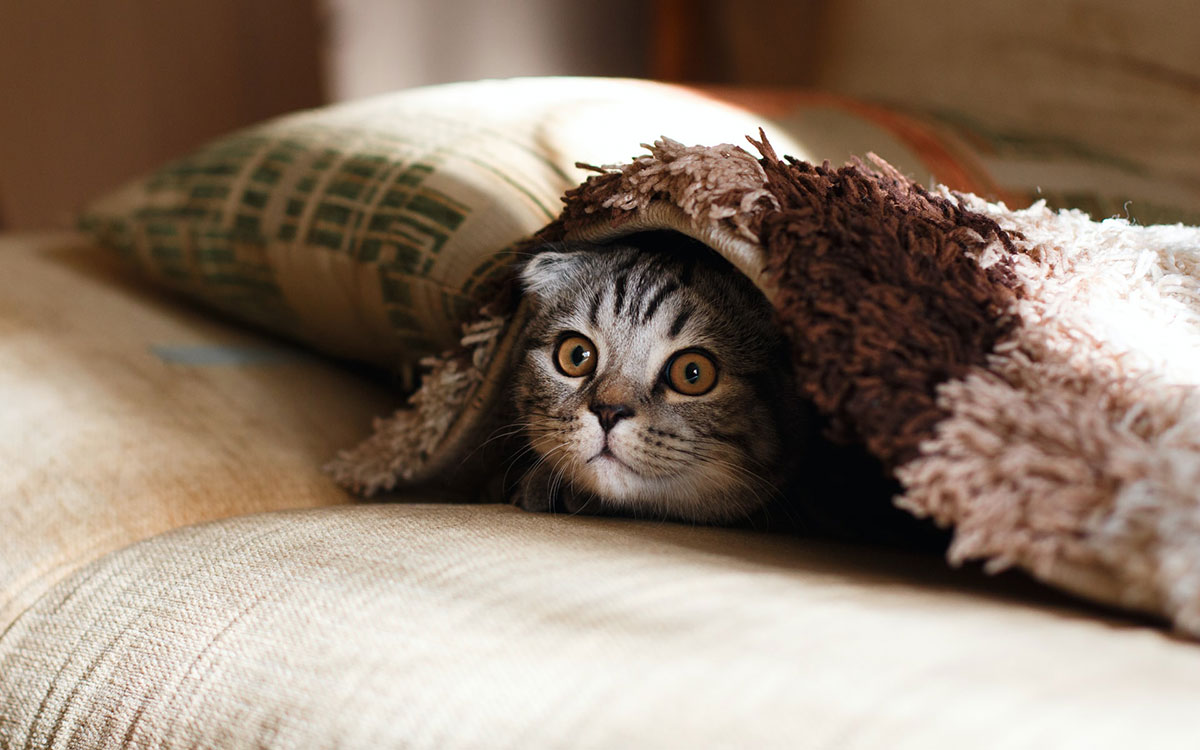Feline diabetes is more common than you might think. This condition affects many cats worldwide.
Understanding feline diabetes is crucial for every pet parent. It can seem overwhelming at first. But gaining knowledge empowers you to care for your furry friend better. Cats, much like humans, can develop diabetes. This condition affects their blood sugar levels.
Left untreated, it can lead to serious health issues. But with the proper care, diabetic cats can lead happy lives. Recognizing symptoms early is vital. Increased thirst, frequent urination, and weight loss are common signs. Managing feline diabetes involves regular vet visits, proper diet, and sometimes insulin shots. As a responsible pet parent, knowing these basics helps. You can make informed decisions for your cat’s health. This guide will provide essential information. It will help you navigate feline diabetes with confidence.
What Is Feline Diabetes?
Feline diabetes is a chronic condition affecting cats. It occurs when their bodies can’t produce or use insulin effectively. Insulin is a hormone that helps regulate blood sugar levels. Without proper insulin function, blood sugar levels rise, leading to serious health issues. The condition is similar to diabetes in humans. Understanding feline diabetes is crucial for pet care. It helps manage symptoms and improve a cat’s quality of life.
Types Of Diabetes In Cats
Cats can suffer from two main types of diabetes. The first type is Type 1 diabetes, which is rare and occurs when the pancreas fails to produce insulin. The second type is Type 2 diabetes, which is more common in cats. In Type 2, the body produces insulin but can’t use it properly. Obesity in cats often leads to Type 2 diabetes. Both types require management and care.
Common Symptoms
Recognizing symptoms early is key. Increased thirst is a common sign of diabetes, and frequent urination can indicate high blood sugar levels. Weight loss, despite a good appetite, is another symptom. Cats may become lethargic and less playful. Watch for changes in their coat condition. Unkempt fur can signal diabetes. If symptoms appear, consult a vet immediately. Early detection aids effective treatment.

Causes Of Diabetes In Cats
High-carbohydrate diets and obesity are common causes of diabetes in cats. Genetics also plays a role in feline diabetes. Understanding these factors helps pet parents manage their cats’ health effectively.
Understanding the causes of diabetes in cats is crucial for any pet parent. This knowledge can help you identify risk factors and take preventive measures. While diabetes might sound daunting, knowing what contributes to it can empower you to make better decisions for your feline friend.
Genetic Factors
Genetics plays a significant role in feline diabetes. Some cats are predisposed to this condition simply because of their breed or family history. For instance, Burmese cats are known to be more susceptible to diabetes. Knowing your cat’s genetic background can give you a head start on managing risks. If you adopt a cat, ask about its lineage. This can provide valuable insights into any hereditary health issues.
Lifestyle Influences
Lifestyle choices can greatly impact your cat’s risk of developing diabetes. Obesity is a major factor. Cats that are overweight have a higher chance of becoming diabetic. Consider your cat’s diet and activity levels. Are they getting enough exercise? Is their diet balanced? I once had a cat that loved lounging around, and it took some creative play to get him moving. But that effort paid off in a healthier, happier cat. Stress is another lifestyle factor. Cats, like humans, can experience stress, which may contribute to various health issues, including diabetes. Is your cat experiencing changes at home, like a new pet or a move? Such shifts can affect their well-being. By understanding these causes, you can make informed choices about your cat’s lifestyle and environment. What steps will you take today to promote your cat’s health?
Diagnosing Diabetes In Cats
Feline diabetes can be a challenging condition for pet parents. Early diagnosis is crucial for effective management. Understanding the signs and getting proper veterinary tests can make a difference. This section will guide you through the process of diagnosing diabetes in cats.
Signs To Watch For
Look for increased thirst in your cat. Frequent urination is another sign. Noticeable weight loss can occur. Cats might eat more but lose weight. Lethargy or decreased activity is common. Cats may also have poor coat condition. Observing these signs early helps in timely diagnosis.
Veterinary Tests
Your vet will perform blood tests, which measure glucose levels. Elevated glucose indicates diabetes. Urinalysis is also conducted, which checks for glucose in urine. Its presence confirms a suspicion. Regular monitoring helps manage the condition. Early vet visits lead to better outcomes.

Treatment Options
Explore various treatment options for feline diabetes, including insulin therapy, diet changes, and regular vet check-ups. Effectively managing your cat’s condition ensures a healthier, happier life. Early detection and consistent care play a key role in improving outcomes.
Feline diabetes can be a challenging diagnosis for any pet parent. However, understanding the treatment options can empower you to effectively manage your cat’s health. The key lies in a combination of medication, insulin, and dietary changes. Let’s dive into these aspects, ensuring you have the knowledge to support your furry friend.
Medication And Insulin
Treating feline diabetes often involves medication and insulin therapy. Your vet might prescribe specific medications that help regulate your cat’s blood sugar levels. Insulin is typically administered through injections. While this may sound daunting, many pet parents find it becomes a routine part of their day. One cat owner shared how they initially feared giving injections but soon realized their cat’s health improved dramatically. Could insulin therapy be the turning point for your cat’s well-being?
Dietary Management
Diet plays a crucial role in managing feline diabetes. Cats often need a diet low in carbohydrates and rich in protein. This helps maintain stable blood sugar levels. Consider transitioning your cat to a specialized diabetic diet, available at pet stores and through veterinarians. You might find that your cat enjoys these meals even more. Sometimes simple changes in diet can make a big difference. Have you considered how a diet shift could enhance your cat’s quality of life? Monitoring your cat’s food intake and consulting with your vet for personalized advice can further support your cat’s health journey.
Managing Feline Diabetes At Home
Caring for a diabetic cat involves understanding its special needs. Regular monitoring of blood sugar levels is crucial. Proper diet, timely insulin shots, and regular vet visits help maintain your cat’s health.
Managing feline diabetes at home might sound daunting, but with the right approach, it’s entirely manageable. When my cat, Whiskers, was diagnosed, I felt overwhelmed. Yet, with a structured routine and a little patience, both Whiskers and I adapted. The key lies in consistency and understanding your cat’s needs.
Daily Care Routine
Establishing a daily care routine is crucial for managing your diabetic cat’s health effectively. Begin by feeding your cat at the same time each day. Consistency helps regulate their blood sugar levels. Choose a high-protein, low-carbohydrate diet that your vet recommends. This supports stable blood sugar levels and overall well-being. Incorporate regular play sessions. Physical activity helps maintain your cat’s weight and promotes healthy glucose metabolism.
Monitoring Blood Sugar
Monitoring your cat’s blood sugar is critical to managing diabetes at home. Use a glucometer designed for pets, as humans might give inaccurate readings. Check your cat’s blood sugar levels at the same time each day. This helps you notice patterns and adjust care routines accordingly. Keep a log of blood sugar readings. This record is invaluable for vet consultations and enables you to track the effectiveness of your management strategies. Have you ever noticed how your cat behaves when their sugar levels fluctuate? Observing these cues can be just as important as numerical readings. Managing feline diabetes at home is about finding a balance. You can give your cat a healthy and happy life with patience and dedication.
Preventing Complications
Feline diabetes can lead to severe complications if not managed well. Proper care helps maintain your cat’s health and happiness. Understanding prevention strategies is key to ensuring your cat enjoys a quality of life. Early intervention can avoid serious health issues. Let’s dive into how to prevent complications.
Long-term Health Strategies
Regular vet visits are crucial for monitoring your cat’s diabetes. These visits help track blood sugar levels and adjust treatment plans. A balanced diet plays a significant role. High-protein, low-carb foods help regulate blood sugar. Consistent exercise keeps your cat active and healthy. It aids in weight control, reducing stress on the body. Hydration is also vital. Always provide fresh water for your cat. These strategies support long-term health and prevent complications.
Emergency Situations
Recognize signs of diabetic emergencies early. Symptoms like vomiting or excessive thirst need attention. Keep a list of emergency vet contacts handy. Quick action can save your cat’s life. Learn how to check your cat’s blood sugar at home. This knowledge helps in critical situations. Have a plan for administering insulin during emergencies. Understanding these steps prepares you for unexpected events. Your preparedness ensures your cat’s safety in emergencies.
Impact On Cat’s Lifestyle
Feline diabetes affects every aspect of a cat’s daily life. Pet parents often worry about how this condition changes their furry friend’s habits. Understanding these impacts helps in creating a comfortable environment for diabetic cats. This section explores how diabetes affects a cat’s lifestyle, focusing on exercise and comfort adaptations.
Exercise And Activity
Diabetes can reduce a cat’s energy levels. Many diabetic cats show a decrease in their normal activity, and fatigue becomes a common issue. Regular exercise helps manage weight and blood sugar levels. Encourage gentle play sessions. Short playtimes can be beneficial. Use toys that stimulate movement. Interactive toys can motivate your cat to move. Always monitor for signs of exhaustion. Stop if your cat seems too tired.
Adaptations For Comfort
Comfort becomes a priority for diabetic cats. They often need a cozy resting space. Provide soft bedding to ease their joints. Warm beds can soothe aches and pains. Ensure easy access to food and water. Place bowls nearby to reduce movement. Frequent and small meals are ideal. This helps stabilize blood sugar levels. Keep their litter box clean and accessible. Avoid high sides that might be hard to climb. Make their environment stress-free. Calm surroundings support their health.
Support For Pet Parents
Feline diabetes can be overwhelming for pet parents. Support plays a crucial role. Finding the right resources can make the journey smoother. Emotional well-being is equally important. A balanced approach helps both you and your cat thrive.
Resources And Communities
Many online forums and groups focus on feline diabetes. These communities offer advice, shared experiences, and encouragement. Websites like the Feline Diabetes Message Board provide valuable insights. They allow pet parents to connect with others in similar situations. Veterinary clinics often have brochures and pamphlets. These can help you understand and manage diabetes in cats. Engaging with local support groups can also be beneficial. They provide face-to-face interaction and support.
Emotional Well-being
Managing a diabetic cat can be emotionally taxing. It’s vital to take care of your mental health. Remember, you’re not alone in this journey. Speaking to a therapist or counselor can help. They offer strategies to manage stress and anxiety. Spend quality time with your cat. It strengthens your bond and provides comfort. Simple activities like playing or cuddling can reduce stress. Make sure to take breaks for self-care. A relaxed mind is more effective in managing daily challenges.
Frequently Asked Questions
How Difficult Is It To Manage A Cat With Diabetes?
Managing a diabetic cat requires commitment and routine. Regular insulin injections and a controlled diet are essential. Frequent veterinary visits help monitor health. With proper care, diabetic cats can lead healthy lives. It’s a manageable condition with dedication.
What Is The Lifespan Of A Diabetic Cat?
With proper management, a diabetic cat can live several years. Lifespan varies based on treatment, diet, and overall health. Regular veterinary check-ups and insulin therapy are crucial. With diligent care, many diabetic cats enjoy a good quality of life.
How To Care For A Diabetic Cat At Home?
Monitor your cat’s glucose levels regularly. Administer insulin as prescribed by the vet. Provide a balanced, low-carb diet. Keep fresh water accessible at all times. Ensure regular vet check-ups to adjust treatment.
Do Diabetic Cats Pee Outside Their Litter Box?
Diabetic cats may pee outside their litter box due to increased thirst and urination. This behavior often signals uncontrolled diabetes. Consult a veterinarian if your cat exhibits this behavior, as proper treatment can help regulate their symptoms. Regular litter box cleaning and monitoring are essential for diabetic cats.
Conclusion
Caring for a cat with diabetes requires commitment. Understanding symptoms helps in early detection. Regular vet visits ensure proper treatment and management. A balanced diet is crucial for your cat’s health. Monitor your cat’s weight and activity levels. Be patient and consistent with insulin administration.
Join support groups for more guidance. Your cat can lead a happy life with diabetes if you stay informed and proactive. Remember, your love and care make a difference. Your dedication can improve your cat’s quality of life. Be a vigilant pet parent.
Every effort counts.





